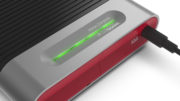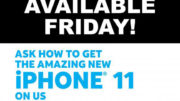Everyone loves wireless charging. I do, I know that. It’s easy, it’s fast, it works. And you’re starting to see more and more cars with wireless charging pads built in. I have one in my car in fact and I love using it. But it makes me wonder, is it really the best option? Here’s my point of view.
The plus side
Yes, wireless charging is easy. You put your phone down and it charges. There’s nothing more to know about that. It’s even better if your car has something like wireless CarPlay or Android Auto so that it connects up to your infotainment system That means you can get in, start the car and go. The days of waiting for your Bluetooth to pair, plugging your phone in, and waiting for sync are long gone. I like that and I know you do too.
The minus sides, and there are several
The biggest problem with wireless charging is that it’s wireless. There’s nothing holding the phone in place. So, if you go around a curve quickly, that phone could fly off the pad and hit you. That’s a pretty big downside. It could hit you and hurt you, or it could hit something solid and hurt the phone. Honestly I’m not sure which is worse. I mean, you’ll heal, but the phone won’t.
On even a gentle turn, the phone might slide just enough that it goes off the charging coil. You put that phone down to charge for a reason, right? Some cars are now being built with large coils and bumps that kind of cradle the phone. But phones are all different sizes and it’s hard to build something that will keep every phone in place.
The biggest problem I see, though, is slow charging. Wireless charging can be 1/4 the speed of wired charging. If you’re getting in the car for a 2 hour battle with traffic, you won’t care. If you’re trying to get a dying phone back to usefulness over a 15 minute drive, that’s another whole story. Either way you want that phone to work, right? You want it to keep charging and keep giving you information and all that, right? A wired connection will simply power up your phone faster.
No one likes wires in the car, I get ya.
I still remember the days, 20 years ago, when going “hands free” in a car meant wiring yourself up like a Christmas tree with a headphone and a wire going into the phone, and a wire going into the lighter socket to power all of it. No one is saying you need to go back to that. But one wire going into your car’s lighter socket or USB connector isn’t that much to ask. You’ll charge faster, you’ll be safer, and it really only takes a second. That’s why I say wireless charging in the car isn’t all it’s cracked up to be. If the wireless charging pad in your isn’t holding your phone securely, and you’re not getting the charging performance you want, consider going back to a wire. It’s not that big of a sacrifice, I promise.
By the way…
People put phones in their car because they want to use them (safely, with their eyes on the road.) They need GPS information, want to listen to music, and occasionally want to talk to someone else. None of that is possible if you have bad service in the car. Cars are made of metal and wires and UV-coated glass and all sorts of things that block signals. That can be a real problem if your phone can’t perform when you need it to.
That’s why you should get a cell phone signal booster from Solid Signal. Cell boosters work by taking strong signal from outside and piping it into the car, truck, or SUV. They’re inexpensive, easy to install, and they work. You’ll want to look into one. Oh, and did I mention that having better cell service will mean your battery doesn’t drain as fast? That’s just one more benefit.
If you’re not sure what you need, call the experts! We have real cell phone techs at our Michigan office and they answer the phone. Call 888-233-7563 and we’ll take care of you. If it’s after hours, all you have to do is fill in the form below.




